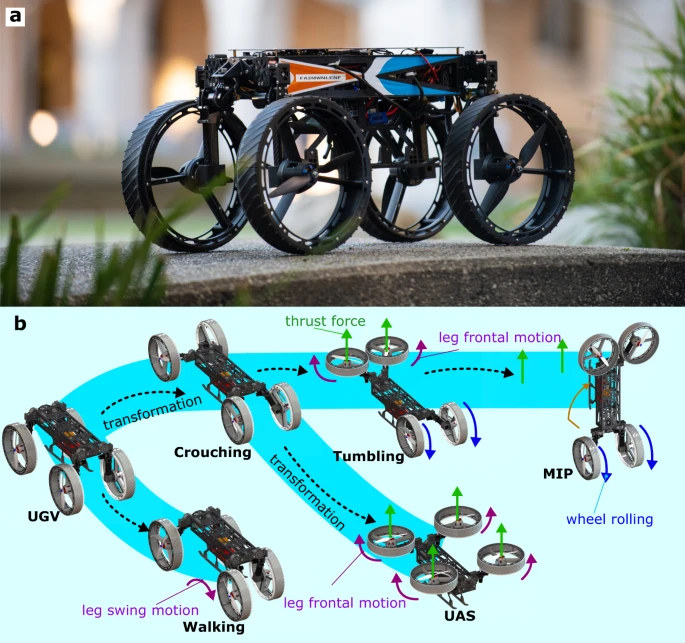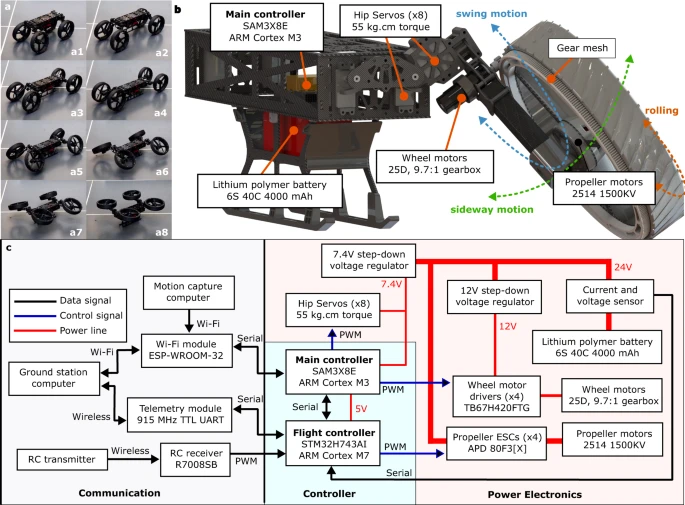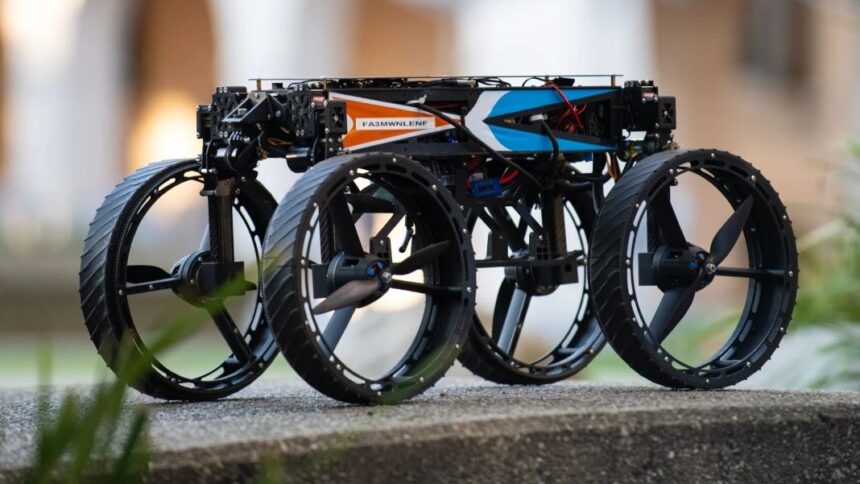- Caltech's M4 Morphobot can fly, walk, and drive, making it a unique candidate for various missions, including NASA's Mars Rover.
- The Morphobot is smartened up with an NVIDIA Jetson chip, designed for edge AI and robotics.
- The robot is undergoing tests for a potential role in future Mars missions. It's currently being tested for its ability to transform while landing.
- The design takes cues from animals that can adapt to different environments, making the robot versatile in its functionality.
Caltech has a new robot that could be a game-changer for NASA’s Mars missions and even more. This special robot, the Multi-Modal Mobility Morphobot or M4, can do many things. It can fly, walk, drive, and more. It’s made smarter by using NVIDIA Jetson technology.
Two years ago, Mory Gharib and Alireza Ramezani, both smart people at Caltech, considered making this robot.
At first, the team said it was too hard. But now it’s real, thanks to money and help from NASA and its Jet Propulsion Lab (JPL).
Alireza Ramezani, a teacher in electrical and computer engineering at Northeastern University, joined to make the robot even better.
The M4 is now a candidate for a Mars Rover mission by NASA. “At NASA, we’re being tested right now for transforming while landing,” said Gharib. The U.S. Department of Transportation is also interested in it.

But M4 isn’t just for space. It can help in emergencies like fires. Using cameras and sensors, it can fly into risky areas to see what’s happening.
Fire departments in Los Angeles are already interested in it. “For first responders, this is huge,” Gharib said.
This robot can also help with delivering things. Normal drones can be unsafe near homes. M4 can land far from people and then drive to the doorstep. This makes it safer. It can even go where trucks can’t.

Right now, the M4 can go as fast as 40 mph and can work for 30 minutes before needing more battery. The team is working to make it even better.
Gharib says that they got a lot of attention after publishing a paper about the M4 in Nature Communications. “We’re kind of dizzy about how it suddenly got so much attention. Different organizations want to do different things and are coming to approach us,” he said.









